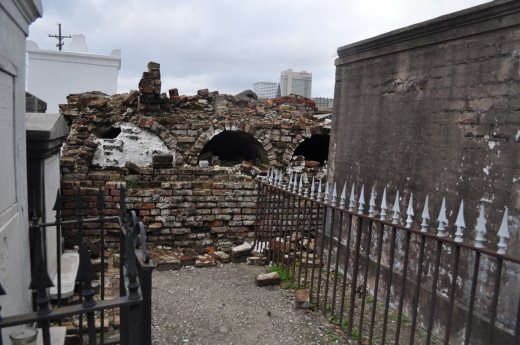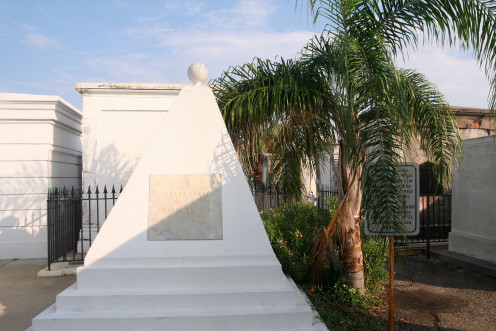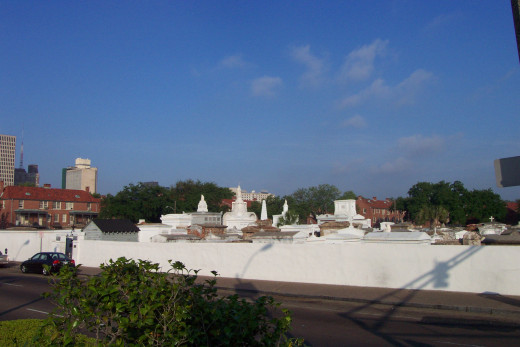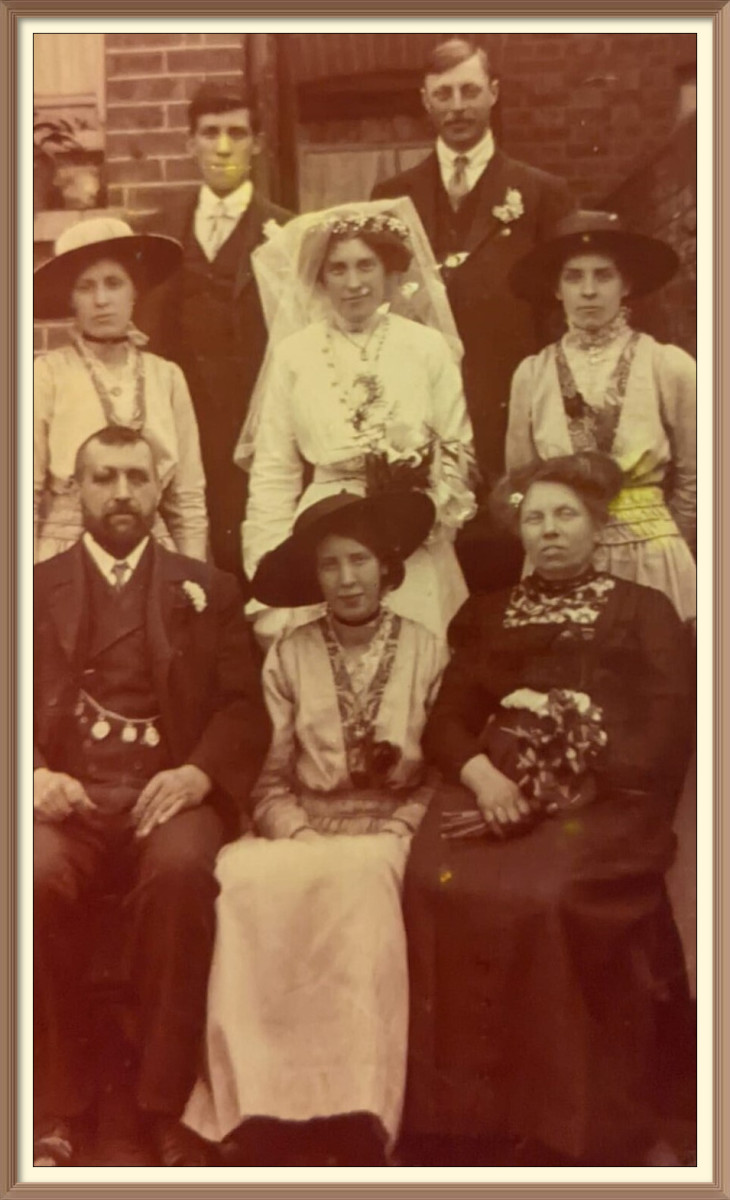New Orleans Above Ground Tombs
An experiment begins
At the end of the Seven Years War France handed control of their Louisiana holdings to Spain.
The Spaniards couldn't be happier- what a coup! They would hold the city at the mouth of the Mississippi River! A goldmine in shipping taxes awaited! They would control the mouth of the river! It was going to be...
Well, it was going to be a whole lot different than they'd hoped.

The Spaniards started to wonder if they were the butt of a French joke.
When they arrived to take control of the colony in 1766 New Orleanians were less than thrilled. The new rulers were run off and didn't regain control for two years.
By 1788, they were still not amused with one another but had managed something of a truce: locals went back to living their lives and the Spanish seethed and paid the bills.
Lots of bills.
1788 brought:
- The Great Fire- started by a candle on Good Friday, it destroyed 856 buildings out of a total of 1,100, including all of the important governmental buildings.
- Hurricanes
- Flooding
- Yellow Fever/plague
Not surprisingly, the death toll was massive. The city's original cemetery on St. Peter street- which had already been far from ideal inasmuch as it had the unfortunate habit of allowing bloated bodies to rise to the surface during rainy season- was full to bursting.
When the Spaniards set aside land for a new cemetery they knew big changes had to be made.

A reporter's take
A reporter from the Charleston Courier had this to say about the situation during a cholera outbreak:
The horrid image of this place is still in my mind. I cannot drive it from my imagination...
The grave was not over two feet and a half deep, I measured it for curiosity. The bottom was soft mud into which could be thrust a stick to almost any depth. The water was within a foot of the top of the grave. The clods of earth around all clay, such as earth as would be dug from a bog. The coffin was put into the grave and it floated so as to be level with the surface.
A negro, a fiend-looking brute, with his pantaloons above his knees, all covered with clay in which he had been working, without hat, without coat or a whole shirt but with a hoe and a spade, mounted the top of the coffin, and tramped it under the water, and then a brother-looking being threw the clods on. ...
I then looked around among the graves. A hole here and holes there were all ready for the next comers some six feet or more long, some three or four feet long. The water was in all the graves. The ground beneath our feet was like that of a swamp the surface of which the sun had encrusted. I tumbled over broken coffins, pieces of which were piled in little heaps, and pieces of which were placed as stakes to mark the spot of the last buried.
The very earth gave way under my feet. The vegetation was that of a swamp. The rank weeds flourished roughly over many a dead body. Old sticks, old poles, such as our gardeners stick peas with, while sides of coffins were put up as grave stands. What a spectacle!
The Spaniards decided to borrow the concept of above-ground tombs from Europe, a practice fairly common to both themselves and the French. This would be the primary means of burial once the new graveyard was opened. And they couldn't wait to get started.

Build in haste, repent in leisure...
It was time for action, and the new cemetery was hastily placed behind Charity Hospital. When a drainage project was proposed a few years later, the dead were in the way and St. Louis Cemetery was moved a block and a half to its current location.
The graveyard has a completely haphazard layout. One story says that's because the church gave purchasers a cloth sized according to what you'd paid which you plopped down in a spot you liked, and that was your plot, leaving later buyers to try to fit between tombs laid out at all angles, leaving room for pathways only where they could be squeezed in.
Another lesson the Church hadn't quite learned was city planning- originally St. Louis No. 1 was more than double its current size and had to be cut back to accommodate the city's growth.
Varney Tomb in St. Louis No. 1

Outside the Cemetery Walls


Going forward
Despite all the bumps along the way, the above ground tombs became a family tradition. Once the tombs were built, they were used by the entire family, so it was cost-and-space efficient in the long term, even if expensive in the short term.
As more cemeteries were added, nearly all of them went with the tomb-burial plan of operations, even competing to see who could build the most elaborate tomb in the same quiet way people do with their houses- there's a reason our cemeteries are called "Cities of the Dead!"
As cremation became more acceptable in other places, it was still shunned in New Orleans, because until Vatican II Catholics weren't allowed to cremate. Plus, long time families already had their tombs, so even when the rules were relaxed, families continued to use their tombs. Even if families choose to cremate, the urns are placed inside the family plot.








